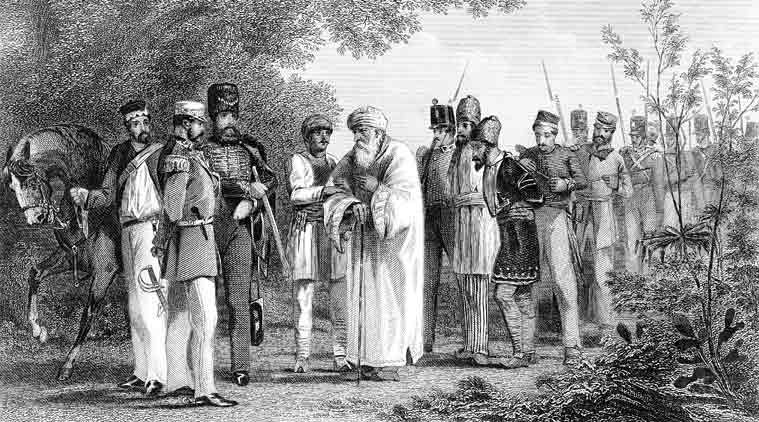With the end of the Mughal Empire and the rise of British power, the 19th century Muslim intellectual had to reimagine his politics.

Title: Muslim Cosmopolitanism in the Age of Empire / Author: Seema Alavi / Publisher: Harvard University Press / Pages: 504 / Price: Rs 495
Muslim Cosmopolitanism in the Age of Empire is an engrossing, wide-ranging and beautifully written account of an emerging Muslim political imagination in the 19th century. Through an examination of five extraordinary figures, Sayyid Fadl, Rahmat Allâh Kairanawi, Haji Imdadullah Maki, Nawab Siddiq Hasan Khan and Maulana Thanseri, Seema Alavi brings alive the variegated, improvisatory and inventive character of Muslim politics and theology, as it struggled to come to terms with new imperial forms. Each of these figures is deeply fascinating in their own right, chosen in part for the extraordinary geographical range of their influence. There is Sayyid Fadl, who is memorialised in Malabar, but whose political activity and theological influence extended to Egypt, Yemen and the seat of the Ottoman Empire itsef; Thanseri participated in the production of new knowledge forms in the Andamans; and Kairanawi’s pedagogical innovations in Mecca became the inspiration for Deoband. Each of these figures could constitute a lifetime of study and Alavi carries her deep learning lightly and well.
But Alavi’s intellectual ambitions are considerably larger than the study of five figures. She wants to demonstrate the ways in which new forms of material culture, print media and transnational merchant networks were opening new vistas of knowledge production and circulation. At one level, the 19th century witnessed in the Ottoman and Mughal worlds something Europe had experienced at least three centuries earlier: the ways in which print cultures and merchant networks transformed theological debates by democratising them. These combined with existing religious and ethnic networks (for instance, the Hadrami diaspora, that provided a crucial link between Yemen, Hyderabad and Malabar) to create new political forms. She shows how the end of the Mughal Empire created new political opportunities to replace an Indo-Persianate intellectual formation with a more Arabic engagement within Indian Islam, facilitated by the existence of the British Empire itself.
But, most ambitiously, Alavi challenges staple assumptions about Islamic political thinking. These include, among other things, the idea that the Caliph remained central to the Muslim political imagination. Alavi debunks this notion, arguing that much of the political thought in the period was about desacralising the Caliph. It was, rather, devoted to exploring other political forms, including the authority of the Sayyid, perhaps best captured in Fadl’s career.
Second, she argues that pan-Islamic engagement was not incompatible with particular territorial loyalties. She shows how so much political and theological effort was being expended to prove the idea that loyalty to the British Empire was not incompatible with Islamic allegiances. In a way, it seeks to demolish the canonical image created by W.W. Hunter’s Indian Musalmans, which centred on the idea that Indian Muslims would remain a political threat to any territorial political formation because their allegiances were transnational. She builds on Ayesha Jalal’s somewhat overstated thesis that pan-Islamism was a British phobia. Third, she seeks to show how political loyalty to territorial forms combined with the creation of a new cosmopolitanism, where the field of thought and action transcended the boundaries of one empire and spilled into the other. And in a theme with the most contemporary resonance, she demonstrates the symbiotic love-hate relationship between the empires and newly emerging theologies. On the one hand, empires feared and demonised new movements like Wahabism; on the other hand, they consistently used them for political ends. If you want to understand the contradictory nature of the engagement of modern empires with Islam, this book provides a fascinating historical guide.
There will be much to quarrel with in a book this rich. The use of the term “cosmopolitan” is misleading and under-theorised. Sure, these are figures that operate on a large geographical canvas, but they could be remarkably insular. Take for instance Kairanawi’s Izharul Haq, which was not an exemplar of modern scientificity as Alavi claims. It was a mean-minded polemic that sought to demolish the authenticity of Christian and Jewish revelation, while establishing the superiority of Islam. It is true, as Alavi argues, that the Muslim political imagination was compatible with a variety of political forms. But she skirts over the thorny question: in the process of producing new interpretations, new forms of authority, new codes of conduct for Muslims straddled in and between empires, what were the kinds of exclusions being produced? How does the language of purity, a recurring theme, sit with the discourse of cosmopolitanism? It is not a cosmopolitanism that is attuned to difference. Alavi’s generosity has opened a fascinating vista of scholarship, but it also prevents her from asking somewhat nastier questions about the evasive exclusions and silences in the figures she studies.
Pratap Bhanu Mehta is president, Centre Policy Research, New Delhi
source: http://www.indianexpress.com / The Indian Express / Home> Lifestyle> Books> Book Review / by Pratap Bhanu Mehta / June 06th, 2015








